Reptiles and Amphibians
Media
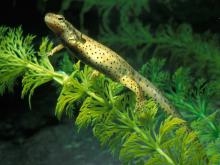
Species Types
Scientific Name
Notophthalmus viridescens louisianensis
Description
A small, olive-brown salamander with a fascinating life cycle, the central newt lives in and around woodland ponds and swamps in all but our far northwestern counties.
Media
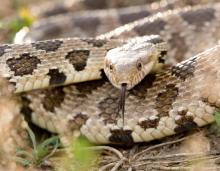
Species Types
Scientific Name
Pantherophis ramspotti
Description
The western foxsnake is a moderately large snake with distinct brown blotches. In Missouri, it is rare and found only in our far northwestern counties.
Species Types
Scientific Name
Pantherophis vulpinus
Description
The eastern foxsnake is extremely similar to the western foxsnake and is mainly identified by its different geographic distribution: in Missouri, this rare species is found only in a few counties along the Mississippi River floodplain north from St. Louis.
Media
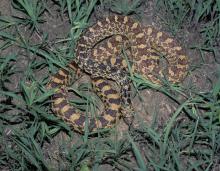
Species Types
Scientific Name
Pituophis catenifer sayi
Description
Missouri's largest snake, the bullsnake may hiss loudly and vibrate its tail when alarmed, but it is nonvenomous. This species is extremely valuable in controlling destructive rodents.
Media
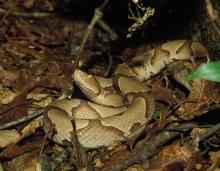
Species Types
Scientific Name
Agkistrodon contortrix
Description
The eastern copperhead is the most common venomous snake in Missouri. Its color varies from grayish brown to pinkish tan, with distinctive hourglass-shaped crossbands.
Media
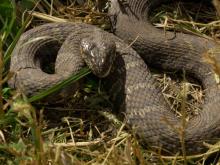
Species Types
Scientific Name
Nerodia sipedon sipedon (northern watersnake) and N. s. pleuralis (midland watersnake)
Description
The northern watersnake and midland watersnake are Missouri's two subspecies of common watersnake. Together they occur statewide. Color is variable: gray, tan, or reddish brown with dark crossbands or blotches. The belly is cream-colored with red, brown, or black spots or half-moon markings.
Media
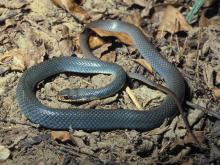
Species Types
Scientific Name
Coluber constrictor flaviventris (eastern yellow-bellied racer) and Coluber constrictor priapus (southern black racer)
Description
The eastern yellow-bellied racer is uniformly tan, brown, olive, blue, gray, or nearly black on top, with a yellow, cream, or light blue-gray belly. It occurs nearly statewide. The southern black racer subspecies also lives in the southeastern half of the state.
Media
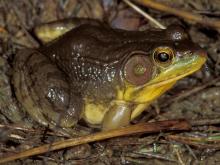
Species Types
Scientific Name
Lithobates clamitans (formerly Rana clamitans)
Description
The green frog looks similar to a bullfrog but is smaller and has a ridge of skin along the sides of the back that is not found on bullfrogs. It is a game animal in Missouri.
Media
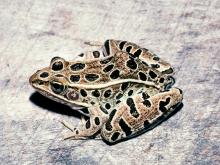
Species Types
Scientific Name
Lithobates pipiens
Description
The northern leopard frog is a medium-sized frog with dark spots on the back. Two skin folds run down each side of the back. In Missouri, it only occurs in a few northwestern counties along the Iowa border.
Media
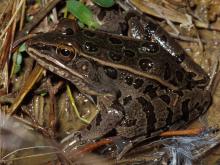
Species Types
Scientific Name
Lithobates sphenocephalus (formerly Rana sphenocephala)
Description
The southern leopard frog is an excellent jumper and quickly leaps into water when startled. From March through July, the males make chuckling or quacking calls from shallow water. Occurs statewide except for the northwestern corner.
See Also
About Reptiles and Amphibians in Missouri
Missouri’s herptiles comprise 43 amphibians and 75 reptiles. Amphibians, including salamanders, toads, and frogs, are vertebrate animals that spend at least part of their life cycle in water. They usually have moist skin, lack scales or claws, and are ectothermal (cold-blooded), so they do not produce their own body heat the way birds and mammals do. Reptiles, including turtles, lizards, and snakes, are also vertebrates, and most are ectothermal, but unlike amphibians, reptiles have dry skin with scales, the ones with legs have claws, and they do not have to live part of their lives in water.





















